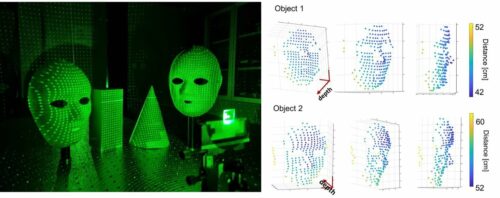A team of researchers has developed a LiDAR sensor made from metasurface that extends the viewing angle to 360° enabling autonomous vehicles to detect unpredictable conditions on the road

Presently, rotating LiDAR sensors are used in autonomous vehicles, enabling them to view objects by projecting light onto them. They also help in identifying the distance from the surrounding objects and the speed or direction of the vehicle. It is difficult to simultaneously identify information from the sides, rear, and front of the vehicle. To overcome this drawback, a research team led by Professor Junsuk Rho (Department of Mechanical Engineering and Department of Chemical Engineering) and Ph.D. candidates Gyeongtae Kim, Yeseul Kim, and Jooyeong Yun (Department of Mechanical Engineering) from POSTECH has developed a fixed LiDAR sensor that provides a 360° view, in collaboration with Professor Inki Kim (Department of Biophysics) from Sungkyunkwan University.
This ultra-small LiDAR sensor is built from the metasurface, an ultra-thin flat optical device that is only one-thousandth the thickness of a human hair strand. Utilizing the metasurface can greatly expand the viewing angle of the LiDAR to recognize objects three-dimensionally. The research team extended the LiDAR sensor’s viewing angle to 360° by modifying the design and periodically arranging the nanostructures that make up the metasurface. It is possible to extract three-dimensional information about objects in 360° regions by scattering more than 10,000 dot arrays (light) from the metasurface to objects and photographing the irradiated point pattern with a camera.
Professor Junsuk Rho explained that they “have proved that we can control the propagation of light at all angles by developing technology more advanced than the conventional metasurface devices, this will be an original technology that will enable an ultra-small and full-space 3D imaging sensor platform.”
In the future, this new sensor can also be implemented in cell phones, augmented and virtual reality (AR/VR) glasses, and unmanned robots to analyze the 3D information of the surrounding environment when configured with nano-optical elements. The new device on various curved surfaces, such as glasses or flexible substrates, enables applications for AR glasses, known as the core technology of future displays.
Click here for the Published Research Paper






